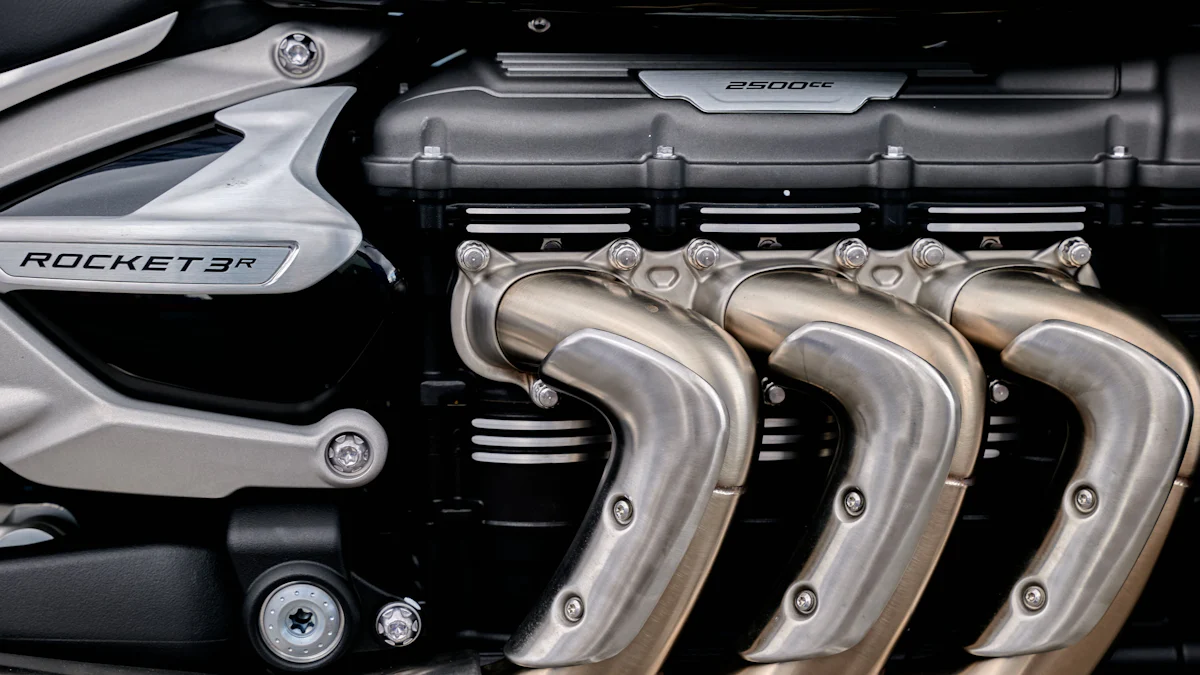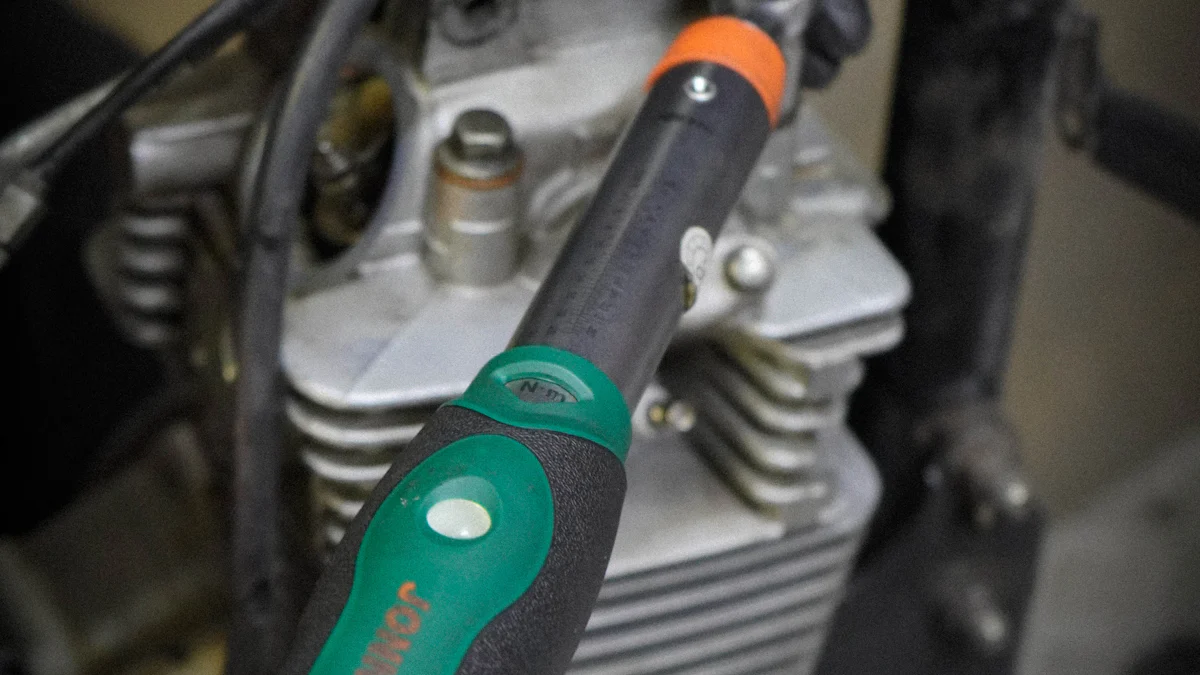
Proper torque application is paramount in the maintenance community to mitigate the risks associated with incorrect techniques. The consequences of neglecting Performance exhaust manifold torque specs can be severe, potentially leading to critical failures in vehicle components. Understanding the significance of accurate torque values and their impact on performance is crucial for every car enthusiast or mechanic. This blog delves into the nuances of Performance exhaust manifold torque specs, offering a comprehensive guide to ensure optimal vehicle functionality.
Understanding Exhaust Manifold Torque Specs
When it comes to exhaust manifold torque specs, understanding the intricacies and significance of these specifications is paramount for any car enthusiast or mechanic. The proper application of torque ensures the optimal performance and longevity of a vehicle’s exhaust system. Let’s delve into the details to grasp the essence of exhaust manifold torque specs.
What Are Exhaust Manifold Torque Specs?
Definition and Importance
Exhaust manifold torque specs refer to the specific measurements of torque required to secure the exhaust manifold properly. Torque, in this context, is the rotational force applied during the tightening process. It plays a critical role in ensuring that the exhaust manifold is securely fastened to prevent leaks and maintain efficient engine operation.
Properly torqued exhaust manifolds are essential for maintaining airtight seals, preventing exhaust leaks, and optimizing engine performance. Neglecting exhaust manifold final torque can lead to issues such as loose connections, gasket failures, and decreased engine efficiency.
Role in Vehicle Performance
The correct application of exhaust manifold final torque directly impacts a vehicle’s overall performance. By adhering to manufacturer-recommended torque specifications, car enthusiasts can ensure that the exhaust system operates at peak efficiency. Properly torqued exhaust manifolds contribute to optimal fuel combustion, reduced emissions, and enhanced engine durability.
View Public Profile Find Torque Specs
Manufacturer Specifications
Manufacturers provide specific exhaust manifold studs and nuts torque values tailored to each vehicle model. These specifications are crucial guidelines that dictate the appropriate amount of force required for securing exhaust components effectively. Adhering to manufacturer-recommended exhaust manifold final torque values is imperative for maintaining warranty compliance and ensuring long-term reliability.
Variations by Vehicle Model
It’s important to note that exhaust manifold torque specs can vary between different vehicle models due to variations in engine design and materials used. Car enthusiasts should consult their vehicle’s service manual or contact the manufacturer directly to obtain accurate performance exhaust manifold torque specifications tailored to their specific make and model.
Intake and Exhaust Manifold Differences
Key Differences
While both intake and exhaust manifolds serve critical roles in an engine’s operation, they differ significantly in function and design. The intake manifold delivers air-fuel mixture to the cylinders, while the exhaust manifold expels combustion byproducts from the engine. Understanding these distinctions is essential when determining the unique intake and exhaust manifold torque requirements for each component.
Specific Torque Requirements
Each type of manifold—intake or exhaust—has distinct torque specifications based on its structural composition and operational demands. Car enthusiasts must pay close attention to these specific torque requirements, as improper tightening can result in leaks, inefficiencies, or even damage to vital engine components.
By mastering exhaust manifold torque specs, individuals can elevate their understanding of automotive maintenance practices while enhancing overall vehicle performance.
Tools and Techniques for Proper Torque

Essential Tools
When it comes to ensuring the proper application of torque, having the right tools is essential. The Torque Wrench is a fundamental instrument that allows precise control over the amount of force applied during tightening. This tool enables mechanics and car enthusiasts to adhere to specific torque specifications accurately, minimizing the risk of under or over-tightening critical components.
In addition to the Torque Wrench, referring to the Manufacturer’s Manual is equally crucial. The manual provides detailed information on the recommended torque settings for various vehicle components, including exhaust manifolds. By consulting the manufacturer’s guidelines, individuals can access accurate and model-specific torque values, ensuring optimal performance and longevity of their vehicles.
Step-by-Step Guide
To achieve proper torque application when working with exhaust manifolds, following a systematic approach is key. A Step-by-Step Guide can help individuals navigate through the process seamlessly, from preparation to final tightening.
Preparing the Manifold
Before applying torque to exhaust manifold bolts or nuts, it is imperative to prepare the manifold adequately. This involves inspecting the mounting surfaces for any debris or damage that could affect the sealing integrity. Cleaning the surfaces thoroughly and ensuring proper alignment of the manifold are essential steps in preparing for torque application.
Applying the Correct Torque
Once the manifold is prepared, it’s time to apply the correct torque values as specified by the manufacturer. Using a Torque Wrench, carefully tighten each bolt or nut in a sequence that ensures uniform pressure distribution across all connection points. Gradually increase the torque until reaching the recommended setting, taking care not to exceed or fall short of the specified value.
Exhaust Manifold Torque Specs Application
After torquing exhaust manifold components, verifying accuracy and consistency is paramount to guaranteeing optimal performance and reliability.
Ensuring Accuracy
To ensure accuracy in torque application, double-checking each fastener’s tightness using a calibrated Torque Wrench is highly recommended. This verification step helps identify any inconsistencies or potential issues that may compromise seal integrity or lead to component failure over time.
Re-checking Torque
Even after initial torquing and accuracy checks, periodic re-evaluation of exhaust manifold torque specs is advisable as part of routine maintenance practices. Factors such as temperature fluctuations and engine vibrations can impact fastener tightness over time. By periodically re-checking torque values and making necessary adjustments, car enthusiasts can maintain optimal performance and prevent potential issues related to loose connections.
Common Mistakes and How to Avoid Them

Over-Tightening
Consequences
Over-tightening exhaust manifold bolts can have detrimental effects on the overall performance of the vehicle. Excessive torque application can lead to bolt stretching, causing potential thread damage and compromising the integrity of the connection. This may result in exhaust leaks, misalignment of components, and even structural deformities in the manifold itself. Moreover, over-tightening can exert unnecessary stress on surrounding engine parts, increasing the risk of premature wear and failure.
To prevent these issues, it is essential to adhere to manufacturer-recommended torque specifications diligently. By using a calibrated torque wrench and following proper tightening sequences, car enthusiasts can avoid the pitfalls associated with over-tightening. Additionally, conducting regular inspections and maintenance checks can help identify any signs of overtightened bolts early on, allowing for timely adjustments and mitigating long-term damage.
Under-Tightening
Consequences
Under-tightening exhaust manifold bolts poses its own set of challenges that can impact both vehicle performance and safety. Inadequate torque application may result in loose connections between components, leading to exhaust leaks and decreased engine efficiency. The lack of proper sealing due to under-torqued bolts can allow hot gases to escape prematurely, affecting fuel combustion and emission control systems. Furthermore, loose fasteners are susceptible to vibration-induced loosening over time, posing a significant risk of component detachment while driving.
To prevent these repercussions, it is crucial to meticulously follow the specified torque values provided by the manufacturer for each individual bolt or nut. By utilizing a torque wrench set to the recommended settings and applying uniform pressure during tightening, car enthusiasts can ensure secure connections without risking under-torquing. Regularly monitoring bolt tightness and addressing any signs of loosening promptly are key practices in maintaining optimal exhaust system performance.
Using Incorrect Tools
Common Errors
One common mistake car enthusiasts make when working on exhaust manifolds is using incorrect tools for torque application. Improvising with inadequate or incompatible tools can lead to inaccurate torque readings, uneven tightening pressure, and potential damage to fasteners or components. Using tools not designed for precise torque application increases the likelihood of under or over-torquing critical connections, jeopardizing the overall integrity of the exhaust system.
To avoid this pitfall, it is imperative to invest in high-quality torque wrenches specifically calibrated for automotive applications. These specialized tools provide accurate torque measurements tailored to different bolt sizes and materials used in exhaust manifolds. Additionally, referring to the manufacturer’s manual for tool recommendations ensures that car enthusiasts use appropriate equipment for each task, minimizing errors related to tool selection.
Recommended Practices
When it comes to selecting tools for exhaust manifold work, car enthusiasts should prioritize quality and precision above all else. Investing in reputable brands known for producing reliable torque wrenches guarantees accurate readings and consistent performance during tightening procedures. Additionally, regularly calibrating torque wrenches according to manufacturer guidelines ensures their continued accuracy over time.
Incorporating digital torque wrenches with adjustable settings into one’s toolkit offers versatility when working on various vehicle models with distinct torque specifications. These advanced tools provide real-time feedback on applied force levels, alerting users if they exceed preset limits or deviate from recommended values. By embracing technology-driven solutions for torque application tasks, car enthusiasts can enhance their workflow efficiency while minimizing errors associated with manual tightening methods.
By understanding common mistakes related to exhaust manifold final torques application and implementing preventive measures effectively through proper tool usage and technique adherence ensures optimal performance gains while safeguarding against potential risks associated with incorrect torquing practices.
Mastering torque specs is a fundamental aspect of vehicle maintenance, ensuring optimal performance and longevity. Proper torque application, as highlighted by Nenonen, is crucial in preventing machine damage and maximizing power efficiency. The feeling of responsiveness and power availability, emphasized by Tapani Katila, underscores the significance of understanding torque. By adhering to manufacturer-recommended specifications and using the right tools, car enthusiasts can maintain peak engine functionality and prevent issues like leaks or component damage. Prioritizing torque mastery not only enhances vehicle performance but also safeguards against potential risks associated with incorrect torquing practices.
Post time: Jun-11-2024



